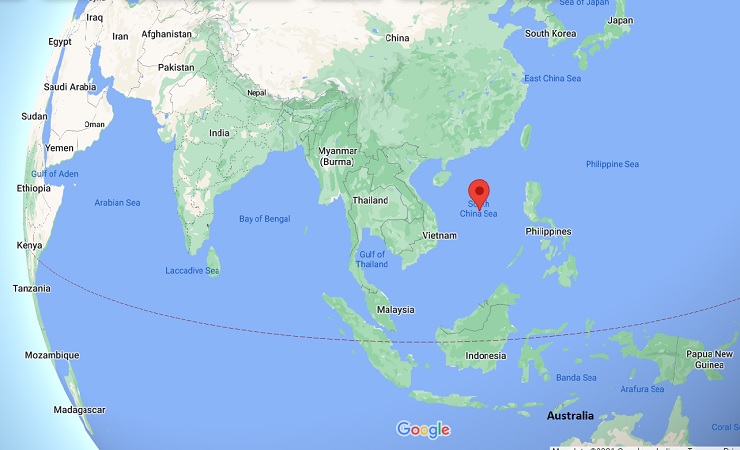India plans to deploy four warships in the conflict-prone maritime regions of South China Sea and the Western Pacific in August for over two months. Sending the warships will send a signal of India's intent to China in a region it considers its backyard.
Through this deployment, India will consolidate its relations with South-East Asian nations and enhance naval co-operation with the navies of Vietnam, the Philippines, Singapore and Indonesia.
Separately, India will also hold the Malabar maritime exercise with the Quad countries—Australia, USA and Japan. This would be the second time that all four nations will participate in the Malabar exercises after Australia joined in 2020.
#IndianNavy’s Eastern Fleet ships – #INSRanvijay, #INSShivalik, #INSKadmatt & #INSKora are scheduled to proceed on an Overseas Deployment of over two months to #SoutheastAsia, #SouthChinaSea & Western Pacific (1/n).@DefenceMinIndia@PRO_Vizaghttps://t.co/cMdPCUFslM
Filepic.twitter.com/ljTHmoULPB
— SpokespersonNavy (@indiannavy) August 2, 2021
The four warships include guided missile destroyer Ranvijay, guided missile frigate Shivalik, anti-submarine corvette Kadmatt and guided missile corvette Kora. A statement by the Ministry of Defence says: "The latter three ships are indigenously designed and are equipped with a versatile array of weapons and sensors".
With this significant deployment, India will give a push to its benign Indian Ocean Region (IOR) strategy of Security and Growth for All in the Region (SAGAR). The region extends from East Africa to the Western Pacific and sustains vital shipping routes for global trade.
The Defence Ministry statement adds: "These maritime initiatives enhance synergy and coordination between the Indian Navy and friendly countries, based on common maritime interests and commitment towards Freedom of Navigation at sea. Besides regular port calls, the task group will operate in conjunction with friendly navies, to build military relations and develop interoperability in the conduct of maritime operations".
The deployment will also help India give a fillip to its Act East policy by strengthening relations with the ASEAN nations—some of which have been put under sustained pressure by China through maritime disputes and violations of Exclusive Economic Zones.
Contrary to China's policy of coercion and conflict, India will seek to enhance co-operation and build the strengths of the other nations. The first virtual Quad meeting held on 12 March 2021 with US President Joe Biden, Narendra Modi, Japanese Prime Minister Yoshihide Suga and Australian Prime Minister Scott Morrison framed an Indo-Pacific strategy that envisaged security, health care, economic development and climate change for member nations.
With their focus firmly on keeping the Indo-Pacific conflict-free and the shipping lanes open to all, the four leaders called for a Free and Open Indo-Pacific. Since then, a number of countries have been undertaking freedom of navigation operations in the Taiwan Strait, South China Sea and East China Sea. The decision by India to send four warships to South-East Asia ties up with that strategy.
Calling the Quad, "a force for global good", Modi said:" We are united by our democratic values and our commitment to a free, open and inclusive Indo-Pacific. Our agenda, covering areas like vaccines, climate change, and emerging technologies make the Quad a force for global good…" and described it as an “important pillar of stability in the region”.
The summit also decided that India will manufacture coronavirus vaccines while the other countries will support finance and logistics to enable vaccine distribution in the region. The debilitating coronavirus—a fast-spreading respiratory infection that originated in Wuhan, China, and spread globally, crippled global healthcare systems. The leaders also decided to build resilient supply chains in the wake of these getting disrupted due to China's mechanisations.
With concerns over China's growing military assertiveness in the Indo-Pacific region, the Quad countries are looking at enhancing the engagement to Quad plus by linking up with South Korea, Vietnam and New Zealand. At a call from the US, the seven Quad plus countries first met in March 2020 to discuss the global pandemic, rescue stranded citizens as well as put back the global economy on track.
The second Quad summit, to be held in-person in Washington in Sept-Oct this year, will further synergise the plan of action.




















